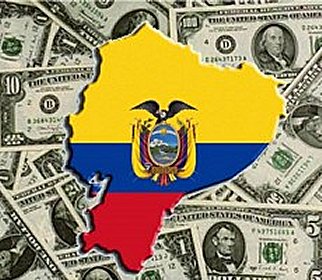 Living in Ecuador could be both, cheap and expensive at the same time. For instance, a 20 minutes cab ride at rush hour will cost you no more than $5 dollars in Quito, the capital city, while you may pay from $1,200 to $2,000 dollars per square meter for a new apartment in a modern and well secured condo. Sometimes you may even have to pay more if you look for wide-open and green spaces to raise a family–$450 thousand for a 250 square meters home in a residential area–.
Living in Ecuador could be both, cheap and expensive at the same time. For instance, a 20 minutes cab ride at rush hour will cost you no more than $5 dollars in Quito, the capital city, while you may pay from $1,200 to $2,000 dollars per square meter for a new apartment in a modern and well secured condo. Sometimes you may even have to pay more if you look for wide-open and green spaces to raise a family–$450 thousand for a 250 square meters home in a residential area–.
The country of about 15 million people is the largest one outside the US territory in officially using the American dollar as its currency. The dollar has been fully accepted since 2000, after an economic crisis caused by years of monetary and fiscal mismanagement and triggered by a banking panic. More than two million people emigrated between 1999 and 2000 to Europe and to the US to escape poverty and lack of opportunities.
Nowadays Ecuador’s government is desperate to finance its growing fiscal and current account deficit, giving the important reduction in the oil price and the rising dollar. The Ecuadorian president announced last week that the central government would stop its partial funding (40 percent) to the nationalized pension system, while social security’s officials are proposing a 20 percent increase of the payroll tax to make the system sustainable. At the same time, the government is promoting a massive housing plan for low income families, whose price is below $70,000, thus targeting people buying their first property. If you know anything about the last international financial crisis that hit countries like the US, you know how dangerous this policy may turn out to be. This plan would be financed, too, with funds from the “excess” of the social security system. The last is a strategy to win support for the next presidential elections in February, 2017.
Fiscal largesse during the last seven years has had its consequences. The government that on 2008 defaulted on a portion of its external commitments now is taking dollars from anywhere and everywhere; China its main creditor, international banks and investors, even its own central bank. In March the government sold bonds for $750 millions at 10.5 percent interest rates with only five years maturity, the highest for other comparable emerging markets these days. The spread between this rate and a five-year US treasury bond amounts to 8.94 percent, the highest one in the history of this country.
This latino version of a welfare state, implemented by the citizen revolution since 2007, funded by the oil boom seems to be ending. Just when many émigrés have been returning to Ecuador with or without money after the international financial crisis that heavily hit Spain. Fiscal irresponsibility is again the ultimate cause similar to cases like Greece. But this time there may be another victim, the US dollar.
Although, the real attack on the dollar by the Ecuadorian government may come from the financial front. Since last September the government has passed several laws and regulations whose main goal is to make use of the deposits in the banking system. Chief among them are the national monetary wallet supplied by the central bank, the creation of a Monetary Junta that can oversee and make decisions about where should the private banks allocate their credit, and the centralization of paper and electronic bills, also, in the central bank. All this will allow to the government to use money either for promoting the construction sector or keeping it going until the next elections.
Americans won’t be hurt if Ecuador quits on this foreign currency. But most Ecuadorians will. Even if you think there are short-term gains of adjusting the economy via prices, the experience for some of our neighbors has not been really successful. Just look at Argentina after 14 years of giving up its currency board-like system, or Bolivia in the late 1990s after a successful monetary reform in the mid 1980s, not to mention Venezuela after introducing a new monetary sign under Chavez, even Chile and Brazil have their underlying economic problems in spite of all of its monetary independence.
Dollarization is still the only anchor for low skilled workers and retired people. In fact, private firms domestic and foreign have benefited from lower price uncertainty during these years. Even the government has enjoyed more stability compared to the pre-dollarization period. It is still better for international investors if we keep US dollars circulating. Thus, de-dollarization is again a myopic policy that will make even worse any future repetition of an economic crisis caused by fiscal maladies.
* Pedro P. Romero is a Professor of Economics at Universidad San Francisco de Quito in Ecuador.
Source: HACER











Discussion
No comments for “#Ecuador The Welfare State Crisis and A Lesson Unlearnt – by Pedro P. Romero”